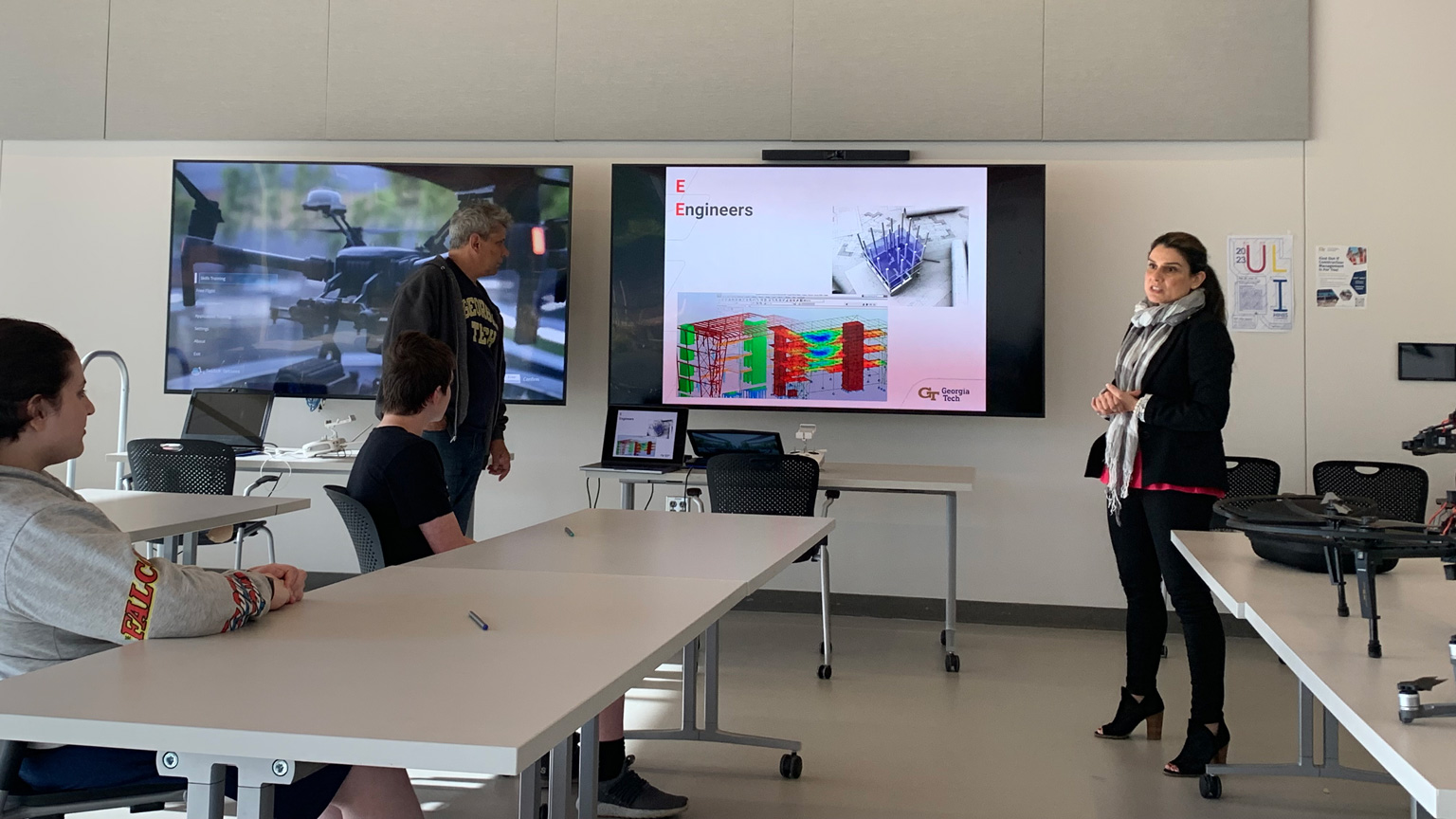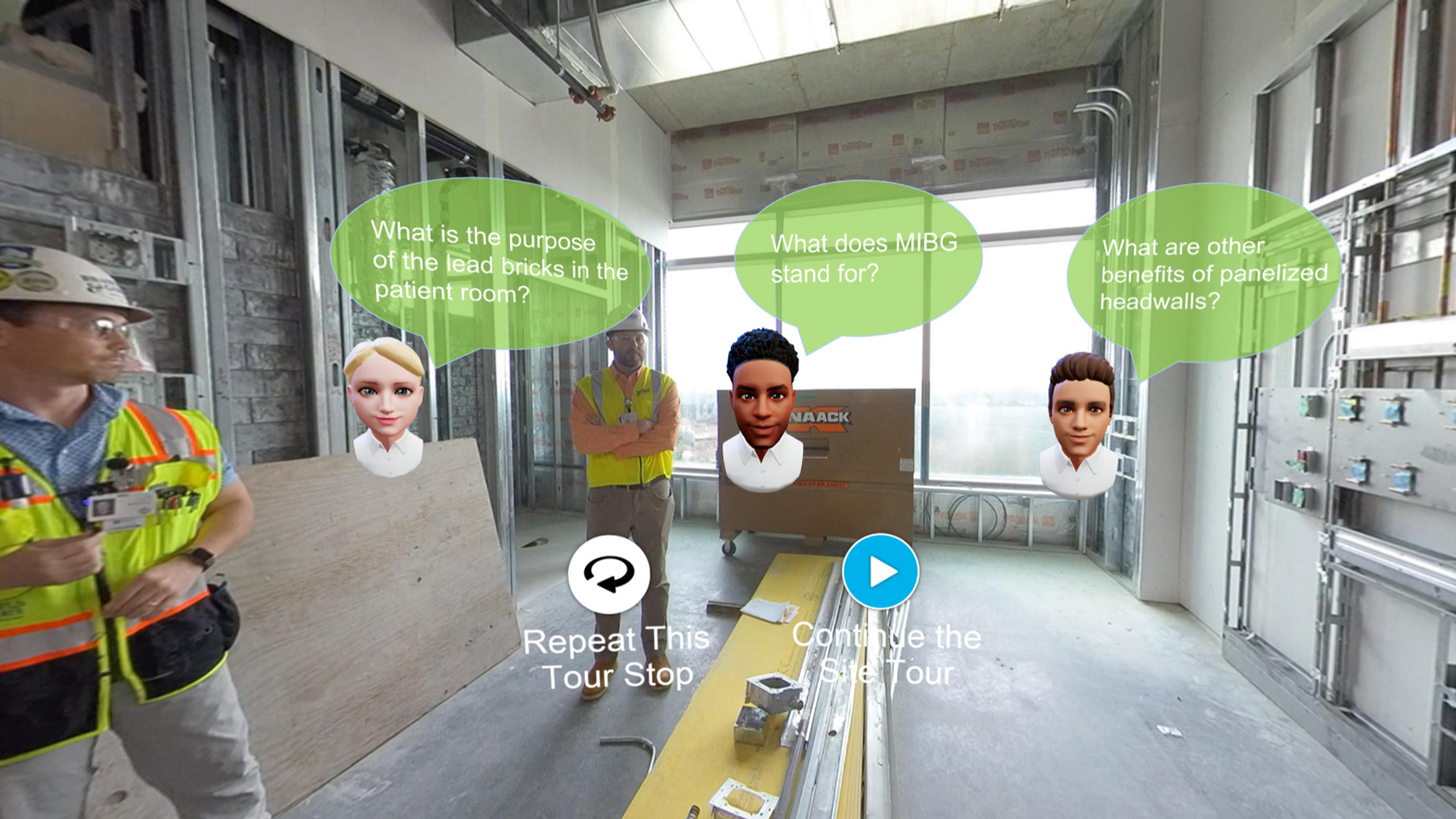Construction Research Makes STEM Education, Jobs Accessible

School of Building Construction Chair Ece Erdogmus has a vision for using emerging technologies to make Science, Technology, Engineering, and Mathematics (STEM) education and jobs more accessible to students with disabilities.
"If we can bring the construction site to the students, perhaps we will remove some of the barriers to engagement and learning in these disciplines," Erdogmus said.
Nearly one in five higher education students have a disability and these students have a higher risk of dropping out compared to their peers without disabilities, according to Erdogmus's team's research. The inaccessibility of curriculum and workplace environments discourages these students from pursuing STEM disciplines, resulting in a lack of representation for people with disabilities, she said.
Construction Science and Management may be considered particularly inaccessible to these students, due to the integral nature of job site visits for these majors.
To make site visits accessible, Erdogmus launched Accessible Construction Education through Virtual/Augmented Reality Discipline Explorations (ACE-VADER) with funding from an Amplify Momentum Project (GT-AMP) grant. ACE-VADER aims to leverage the latest technologies used in Construction Management education — Augmented and Virtual Reality (AR and VR), robotics, and drone-based visual inspections — to create experiential teaching modules for students of all abilities.
Virtual Site Visits for All Students

In an educational context, VR makes inaccessible spaces, environments, and objects spatially accessible. It also engages students in ways that aren't possible using non-immersive images or videos, Erdogmus said.
In addition to ACE-VADER, Ben Kreimer, the creative technology consultant on the team, and Erdogmus worked with collaborators from around the U.S. on two other projects, including a $1.7M NSF grant resulting in scalable educational modules for different applications.
"Humans experience and learn about the world in three dimensions," Kreimer said, "and AR/VR mediums are now enabling educators to capture, create, and share accessible 3D and spatial concepts in this human-native 3D format.”
One of the unique aspects of the ACE-VADER project was developing an interactive virtual site visit. School of Building Construction Ph.D. student Steven Kangisser led the effort with multiple site visits to two different construction projects.
The initial site visit was a single scene with no interactivity. After getting feedback from various Construction Science and Management Students through a class demo (BC 2631), the researchers worked on a much more complex module.
The finalized virtual site visit module showcases the Children’s Hospital complex that is being jointly built by Brasfield & Gorrie and JE Dunn, two large nationally-known general contractors, who also support the School with advisory board membership and other contributions. The complexity of the project resulted in 360 recordings of various phases of the project. Pre-recorded questions and answers, and avatars, made the site visit further engaging.
Diversity in STEM Can Mean Job Possibilities
Through the efforts of the Center for Inclusive Design and Innovation (CIDI), the team worked with high school students with mobility challenges, introducing them to emergent technologies that could be used in the Construction Management field. The students participated in a half-day training (a sampling of the two-week pre-college program) on the Georgia Tech campus. During the training, they engaged with a virtual site visit, drones, and a robot dog. The project team then asked if students saw Building Construction as a viable career option for them.
After participating in the training, the students reported that they learned they can overcome accessibility barriers and pursue career goals in Construction Management using emerging technology. Furthermore, their expectation of facing accessibility barriers in a Construction Management career decreased.
ACE-VADER’s vision is uniquely important, Zerrin Ondin, a research scientist at CIDI said. "The majority of the diversity and broadening participation in STEM discussions do not center on disability," Ondin said. "To make the discussion mainstream, more researchers should investigate how emerging technologies can make STEM education more accessible to students with disabilities."
"In addition to serving as accommodations for STEM education, these emerging technologies will also make appropriate accommodations for workers with disabilities," Maureen Linden, Executive Director of CIDI said. As in educational environments, ACE-VADER's researched technologies allows people to complete work tasks that would not otherwise be accessible to them.
Erdogmus agrees with Linden, because construction trades are particularly difficult on human bodies, and there is a significant rate of expected retirement in the near future. Using technologies that can diminish the wear and tear on the body or extend one’s work life will both be very welcome interventions for the construction industry.
The team is planning to move forward with its research agenda to investigate the impact of emerging technologies on creating more accessible educational and occupational experiences. They collectively believe that emerging technologies hold the potential to increase the representation of people with disabilities in the field of Construction Management.
ACE-VADER team members:
Professors Ece Erdogmus, Javier Irizarry, and Pardis Pishdad-Bozorgi
Current and former graduate students Barbara Spitzer, Steven Kangisser and Jong Hong Yan from the School of Building Construction
Maureen Linden and Zerrin Ondin from CIDI
Ben Kreimer from Emerging Media, LLC.